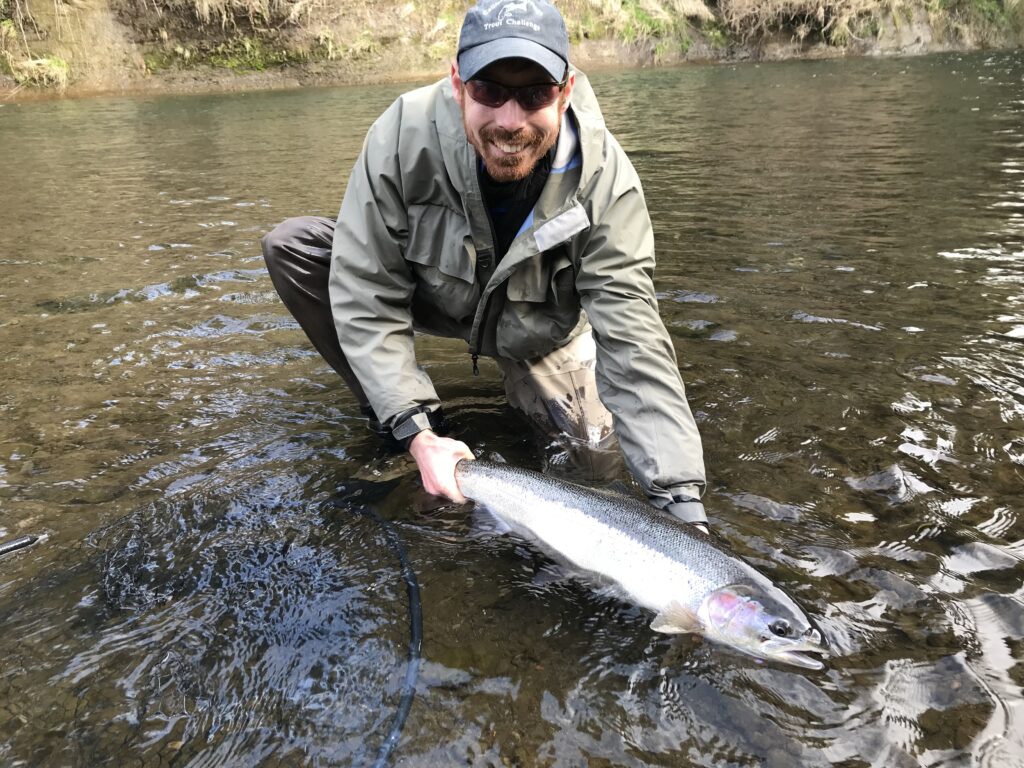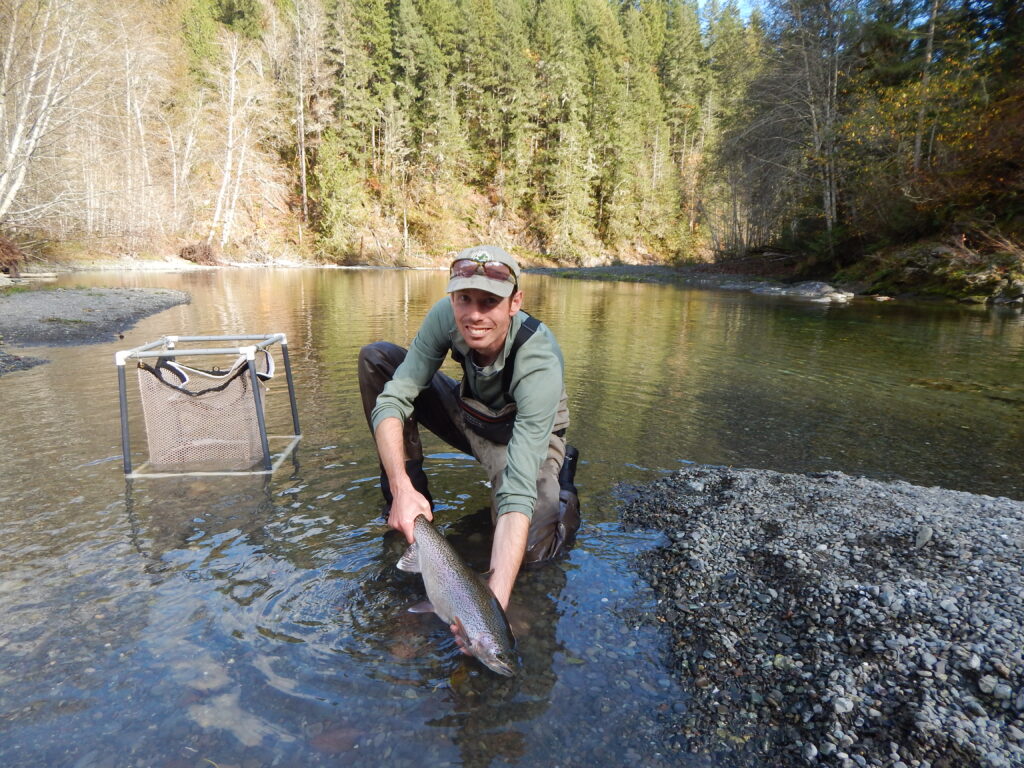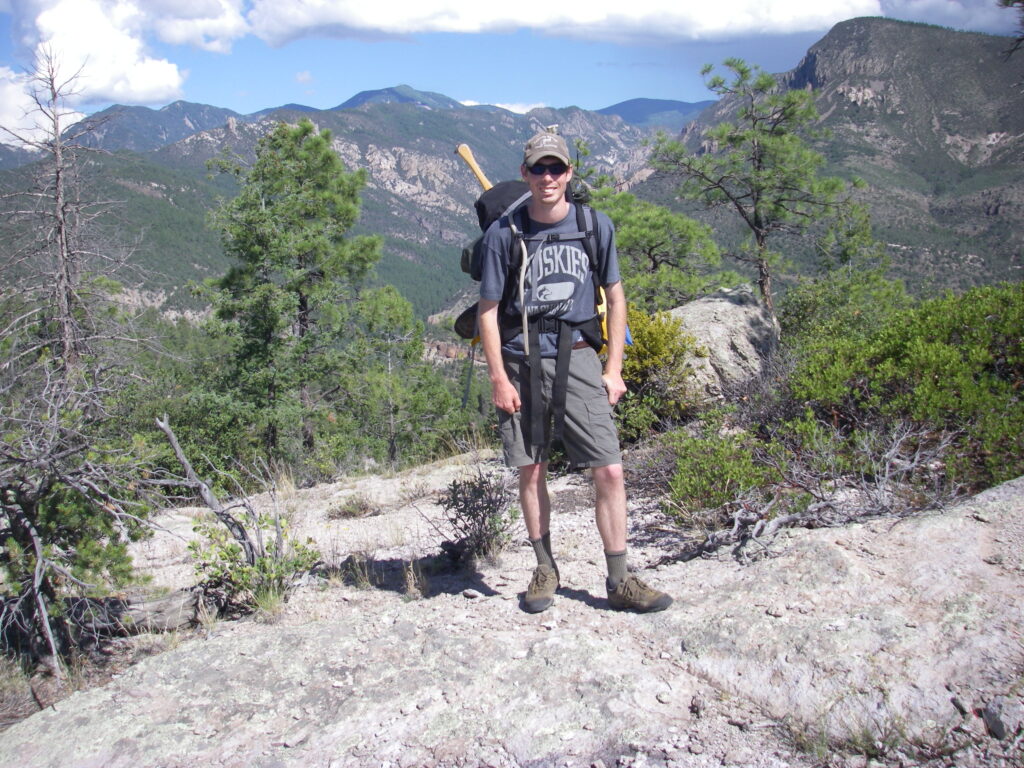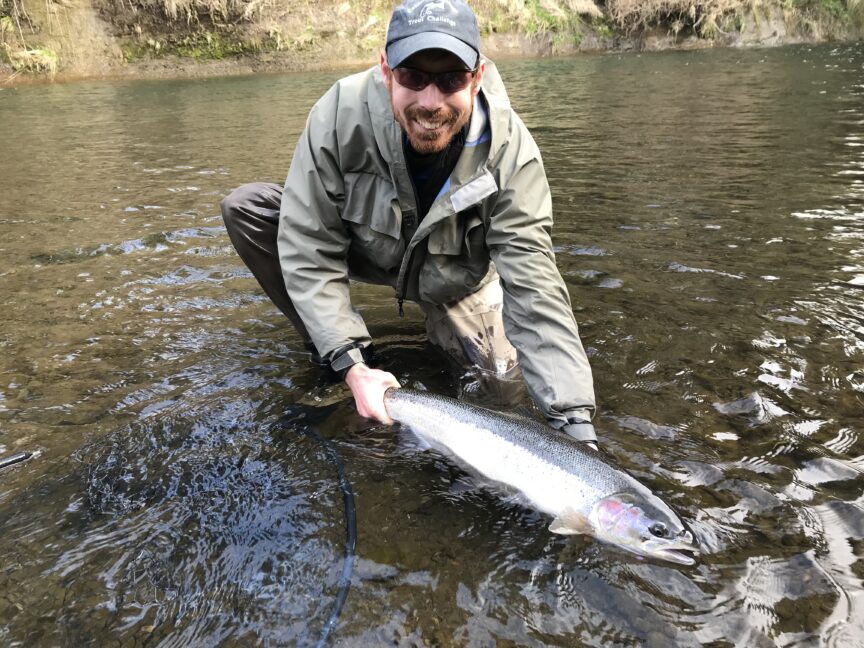
This month, we welcomed our new Science Advisor, Gary Marston, to our team here at Wild Steelheaders United. Gary’s strong expertise on the effects of fisheries and hatcheries on wild steelhead populations; his familiarity with the challenges, both scientific and political, that fishery managers confront in managing steelhead; and his outstanding relationships with scientists in federal and state agencies have proven him to already be an impact player, diving into the many issues we’re working on in his first few weeks.
Utilizing sound science to conserve wild steelhead populations and support sustainable fisheries has been central to Gary’s career. This is also at the foundation of our work here at WSU, so we couldn’t be more excited to have him join our team.
We caught up with Gary earlier this week to answer a few questions for our ‘Meet The Team’ series.
Home town:
Olympia, WA
Home waters:
Olympic Peninsula and Puget Sound (sea-run Cutthroat)
Favorite way to catch steelhead (gear, fly, etc.)?
I will happily fish for steelhead with any gear type, my preference is always with a fly rod.
Boat or hike? Why?
While it certainly depends on the river, I generally prefer to hike. I have loved hiking since I was a kid and being able to combine two of my favorite pastimes makes the experience even more rewarding. As a bonus, putting in a bit of extra leg work often means less of a crowd.
First steelhead you ever caught?
My first steelhead was not an experience that immediately drew me to the fish. I was in middle school and remember being very excited when my grandparents’ neighbor invited me to fish for steelhead. However, when we arrived at Blue Creek on the Cowlitz River and I encountered the combat fishery there much of that excitement vanished. This was not what I had imagined steelheading to be and while I caught an 8lb hatchery fish I was put off by the experience. Shortly after this I started fly fishing and didn’t circle back to steelhead for several years. When I did, these fish truly hooked me. After my experience on the Cowlitz, when I started targeting steelhead again I looked to places on the Olympic Peninsula away from crowds. My learning curve was steep and led me to place steelhead in the same class as unicorns and Bigfoot. However, persistence paid off. After a long day on a small Olympic Peninsula stream with a close friend, the light was fading on our last run when I hooked into a small chrome steelhead. That steelhead may not have been the biggest that I have caught but the dues paid, the company of a good friend and the wild location all made it something special. That fish and that moment are forever ingrained in me and changed the trajectory of my life.

Most memorable steelhead camp?
Being within a reasonable drive from so many great steelhead rivers, most of my outings are day trips. My most memorable “steelhead” camps were not typical fishing outings but were during my graduate school research, when I spent three summers doing field work on a couple Olympic Peninsula rivers living out of a tent most of that time.
What’s your favorite thing about wild steelhead?
I have a deep appreciation for native fish and the fact that steelhead are still found in rivers to which they have uniquely adapted over untold generations is something that I absolutely love about them. I also love the diversity found across the species, their variation in run-timing, freshwater residency and marine migration patterns is awe inspiring.

Other hobbies or passions besides wild steelhead?
I am passionate about fly fishing for native trout and salmon in general. Back in 2003, I embarked on a quest to catch every variety of native trout and salmon in the United States and around 50 varieties later this is an adventure that I continue to pursue and write about on my personal blog. I am also an avid fly tyer and love being in the outdoors in general, whether hiking or gardening.
Tell us about your career before joining Wild Steelheaders United.
I have been involved in fisheries research and management since wrapping up my undergraduate degree in 2008. My first experience was working with NOAA Fisheries on ESA-listed Snake River Sockeye and Spring Chinook. While weathering the 2008 recession I spent a few years working at my local fly shop, teaching fly fishing and tying classes and guiding. Once the job market improved, I was able to get my foot in the door at the Washington Department of Fish and Wildlife where I worked on issues around interactions between hatchery and wild fish, steelhead marine survival patterns, steelhead/ rainbow trout food web dynamics, and life history diversity.

When you think of the future of wild steelhead, what gives you a sense of hope? What makes you concerned or worried?
I prefer to look at the world from a glass half-full perspective. While steelhead face significant challenges from climate change, habitat loss, hatchery impacts and other issues, all is not lost. With forward thinking management and a conservation focus population declines can be reversed. One of the many challenges facing wild steelhead is unfavorable ocean conditions, fueled by climate change. However, steelhead are incredibly resilient fish, with an immense amount of life history diversity providing them the flexibility to adapt to a changing environment. The key to wild steelhead conservation is going to be to support this life history diversity and improve their productivity in freshwater through habitat restoration, improved hatchery practices, and well managed fisheries. Given the chance, wild steelhead will recover, we just need to give them that chance.
Anything else you want supporters of Wild Steelheaders United and Trout Unlimited to know? Sitting on the sidelines and complaining doesn’t make a difference — you have to make your voice heard by policy-makers and people who control budgets. Whether through a Trout Unlimited Chapter, providing public comments or taking part in advisory groups, being engaged and making your voice heard is crucial in moving conservation forward. If you ever have any questions about our work or just want to say ‘hello’ feel free to reach out to me at gary.marston@tu.org. I look forward to working with all of you on behalf of wild steelhead.


